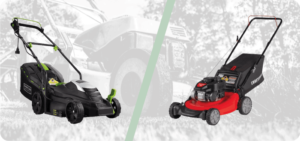
Kicking off with DIY tool kits for beginners, this journey into the world of do-it-yourself projects is both exciting and empowering. With the right tools at your fingertips, you can transform your living space and tackle projects that once seemed daunting.
Essential tools not only enhance your skills but also give you the confidence to explore various projects, from basic furniture assembly to garden maintenance. Whether you’re looking to repair a leaky faucet or build a patio, understanding what to include in your tool kit is crucial for any aspiring DIY enthusiast.
Essential Tools for Beginners
Starting your DIY journey can be an exciting adventure, and having the right tools is crucial for success. A well-equipped tool kit not only makes projects easier but also enhances the quality of your work. This guide will help you identify the must-have tools for any beginner, along with tips on selecting quality brands and organizing your tools effectively.
Must-Have Tools for a DIY Beginner’s Tool Kit
When putting together your first tool kit, there are certain essential tools that every DIY enthusiast should have. These tools will cover a wide range of tasks from small repairs to larger projects. Below is a list of indispensable tools to consider:
- Hammer: A basic claw hammer is perfect for driving nails and handling light demolition tasks.
- Screwdriver Set: A set that includes both flathead and Phillips screwdrivers in various sizes will allow you to tackle most screws.
- Pliers: Needle-nose and slip-joint pliers are versatile tools that can grip, twist, and cut wire.
- Tape Measure: A 25-foot tape measure is ideal for measuring spaces and materials accurately.
- Utility Knife: A retractable utility knife is essential for cutting various materials, from cardboard to rope.
- Drill: A cordless drill with a set of drill bits makes tasks like drilling holes and driving screws much easier.
- Level: A torpedo level helps ensure that your projects are straight and even, especially when hanging shelves or pictures.
- Adjustable Wrench: This tool can fit various sizes of nuts and bolts, making it handy for plumbing and mechanical tasks.
Choosing the Right Tool Brands for Quality and Durability
Selecting tools from reputable brands is essential for ensuring quality and longevity. Established brands often have a proven track record of producing durable tools that perform well under various conditions. Look for brands that offer warranties or satisfaction guarantees, as these can be indicators of confidence in their products.Consider reading reviews or asking experienced DIY enthusiasts for recommendations on reliable brands.
Popular brands like DeWalt, Stanley, and Craftsman have established themselves as leaders in the tool industry, offering a balance of affordability and quality. Investing in these brands can save you money in the long run, as high-quality tools are less likely to break or wear out quickly.
Organizing and Storing Tools Effectively in a Garage
Proper organization and storage of your tools are essential for maintaining them in good condition and ensuring easy access when needed. Consider the following tips for an organized garage workspace:
- Tool Chest: Invest in a sturdy tool chest with drawers to keep hand tools organized and protected from dust and damage.
- Pegboard: Install a pegboard on the wall to hang tools within reach, making it easy to see and access your frequently used items.
- Clear Storage Bins: Use transparent bins for small items like screws, nails, and fittings. Label them for quick identification.
- Work Surface: Ensure you have a dedicated workbench or table for projects. This keeps your workspace clear and organized.
- Regular Inventory: Periodically check your tools for wear and tear. This helps maintain your toolkit and allows you to replace any damaged tools promptly.
“A well-organized workspace is the first step to a successful DIY project.”
DIY Projects Using Tool Kits
Creating something with your own hands can be incredibly rewarding, especially when you have the right tools at your disposal. With a beginner tool kit, you can dive into a variety of projects that not only enhance your skills but also beautify your living space. From simple furniture creations to outdoor enhancements, let’s explore some engaging DIY projects you can tackle with confidence.
Building a Simple Furniture Project
One of the most satisfying projects for beginners is building a simple piece of furniture, such as a wooden side table. This project requires basic tools like a saw, drill, and measuring tape. Follow these steps to create your own:
1. Gather Materials
You will need wooden planks (for the top and legs), wood screws, wood glue, sandpaper, and wood finish or paint.
2. Measure and Cut
Decide on your table dimensions. For a basic side table, cut one plank to the desired size for the top (e.g., 24″x18″) and four legs, each about 24″ long.
3. Sand the Edges
Use sandpaper to smooth out any rough edges on the cut wood to prevent splinters.
4. Attach Legs
Position the legs at each corner of the underside of the tabletop. Use wood glue and screws to secure them in place. Ensure everything is square and even.
5. Finishing Touches
Once the table is assembled, apply wood finish or paint to protect the surface and enhance its appearance. Allow it to dry completely before using.
“A well-built table can bring both functionality and style to any room.”
Building a Stone Brick Patio
Creating a stone brick patio is a fantastic outdoor project that can increase your home’s value and provide a perfect space for relaxation. Here’s how to do it using essential tools:
1. Planning the Layout
Choose the location for your patio and Artikel its shape using string and stakes.
2. Excavation
Dig out the area to a depth of about 6 inches, removing grass and debris to ensure a flat surface.
3. Adding Base Material
Fill the excavated area with crushed stone or gravel, leveling it out with a rake. This layer helps with drainage.
4. Laying the Stones
Start from one corner and lay the stone bricks in your desired pattern, ensuring they fit snugly together.
5. Securing the Stones
Fill in the gaps between the stones with sand, brushing it into the joints to lock them in place. Use a plate compactor or a rubber mallet to ensure stability.
6. Finishing Touches
Lastly, clean the surface and remove any excess sand.
“A well-designed patio is a perfect complement to your backyard, providing an ideal spot for gatherings.”
Maintaining Swimming Pools and Spas
Maintaining your swimming pool or spa is essential for keeping the water clean and safe for use. Here’s a breakdown of methods using basic tools from your kit:
1. Regular Cleaning
Use a skimmer net to remove debris from the surface and a pool brush to scrub the sides. This prevents algae growth.
2. Testing Water Chemistry
Utilize a test kit to check pH and chlorine levels. Adjust with chemicals as necessary, ensuring water quality remains safe.
3. Vacuuming
Use a pool vacuum to clean the bottom of the pool, removing dirt and sediment that accumulates.
4. Checking Equipment
Inspect and clean filters regularly. Ensure that pumps and heaters are functioning properly.
5. Winterization
If you’re closing your pool for winter, lower the water level, and add winter chemicals. Cover the pool to keep debris out.
“Regular maintenance is key to enjoying your pool or spa throughout the seasons.”
Expanding Your Tool Kit and Skills

As you grow more comfortable with your DIY projects, expanding your tool kit becomes essential. Identifying additional tools needed for specific tasks will enhance your capabilities and allow you to tackle more complex projects around the home. Understanding the importance of having the right equipment not only improves efficiency but also ensures safety and quality in your work. Let’s dive into some key areas to consider when expanding your toolkit and skills.
Identifying Additional Tools for DIY Projects
Recognizing what tools you need for different projects is vital for successful home improvement. Here are some common projects and the tools associated with them:
- Furniture Assembly: A power drill and various drill bits are crucial for quickly assembling or disassembling furniture.
- Wall Painting: High-quality paintbrushes, rollers, and drop cloths will ensure a smooth finish without mess.
- Flooring Installation: A miter saw and flooring nailer will make cutting and installing flooring much easier and precise.
- Gardening Projects: Essential tools like trowels, pruners, and a sturdy wheelbarrow will facilitate effective landscaping and garden care.
Understanding what tools complement each project not only improves your skills but also makes DIY home improvement enjoyable and rewarding.
Importance of Yard Equipment in Home Improvement
Yard equipment is a critical part of maintaining and enhancing your outdoor space. Properly tending to your yard can significantly impact your home’s overall aesthetic and value. Consider the following yard equipment vital for home maintenance:
- Lawn Mower: Essential for maintaining a neat and healthy lawn.
- String Trimmer: Ideal for edging and trimming around obstacles where a mower can’t reach.
- Leaf Blower: Helpful for keeping your yard tidy by easily clearing leaves and debris.
- Garden Hose and Sprinkler System: Critical for watering plants effectively, particularly in drier seasons.
Incorporating quality yard equipment into your tool kit will not only enhance your outdoor projects but also contribute to the long-term upkeep of your property.
Plan for Upgrading Home Windows
Upgrading home windows can greatly improve energy efficiency and aesthetics. Here’s a simple plan utilizing tools from your DIY kit to tackle this project:
- Assess Your Current Windows: Determine which windows need replacement or repairs by checking for drafts, condensation, or damage.
- Gather Necessary Tools: Ensure you have a tape measure, utility knife, pry bar, caulk gun, and a power drill.
- Choose Replacement Windows: Research and select energy-efficient windows that complement your home’s style.
- Measure and Order: Accurately measure your window openings and place your order for the new windows.
- Remove Old Windows: Carefully use a utility knife and pry bar to remove the old window units, ensuring no damage to surrounding structures.
- Install New Windows: Follow the manufacturer’s instructions for installation, using shims for proper alignment and a level for accuracy.
- Seal and Finish: Apply caulk around the edges to seal gaps and prevent air leaks, then finish with trim or paint as desired.
With a solid plan and the right tools, upgrading your windows can be a straightforward yet rewarding project that elevates both the comfort and value of your home.
Summary

In conclusion, embarking on DIY projects with the right tool kit can turn your creative ideas into reality. By starting with essential tools and gradually expanding your collection, you’ll be well-equipped to handle a variety of home improvement tasks, making every project a rewarding experience.
FAQ
What basic tools should every beginner have?
Every beginner should have a hammer, screwdriver set, pliers, measuring tape, and a level as their essential tools.
How do I choose the right tool brands?
Look for brands with good reviews, warranties, and a reputation for durability to ensure quality tools.
How can I organize my DIY tools effectively?
Use toolboxes, pegboards, or shelves to keep tools organized and easily accessible in your workspace.
Can I use a DIY tool kit for outdoor projects?
Yes, many DIY tool kits include tools that are suitable for both indoor and outdoor projects, like gardening and patio building.
How do I maintain my tools?
Regularly clean your tools, check for rust, and store them properly to prolong their lifespan and functionality.





